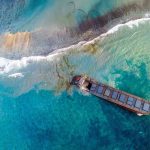The product tanker market has enjoyed some positive momentum so far this year, despite the fact that Russian clean product exports have been retreating. This can be attributed to the higher ton-mile demand. In its latest weekly report, shipbroker Banchero Costa said that “in previous weeks we discussed Russian crude oil exports, with Russia being the second largest seaborne exporter of crude oil in the world after Saudi Arabia, accounting for 10.7% of global crude oil shipments in 2021. However, Russia also hosts a very significant refining industry, and is a major exporter of refined petroleum products. Total clean products loadings from Russian ports in the 12 months of 2021 reached 72.5 mln tonnes, which was a +3.8% y-o-y increase from 2020, but also a +7.1% increase from (pre-Covid) 2019.
According to the shipbroker, “given the impact of war and sanctions, exports were negatively impacted so far in 2022. In Jan-Aug 2022, Russian clean products loadings declined by -5.1% y-o-y to 46.5 mln tonnes, from 49.0 mln tonnes in Jan-Aug 2021. This was still above the 45.8 mln t loaded in (pre-Covid) Jan-Aug 2019. The proportion of cargo types remains similar to last year, with gasoil cargoes adding up to 27.6 mln t, or 59% of the total clean products exports, naphtha with 11.7 mln t (25%), and gasoline at 4.3 mln t (9%). Russia accounted for about 8 percent of global clean products seaborne exports in Jan-Aug 2022. More specifically, it accounted for 13% of global gasoil exports, and 14% of global naphtha exports, but just 3% of global gasoline exports”.
“About 16% of clean products shipped from Russian ports in JanAug 2022 was loaded in Aframaxes/LR2 tankers, 7% in Panamaxes/LR1s, 67% in MR tankers, and 10% in smaller tonnage. LR tonnage is used primarily for naphtha cargoes from the Black Sea to South Korea or Taiwan, but also for diesel cargoes from the Black Sea to Asia or the USA. In terms of destinations for Russian clean product exports, still in the first 8 months of 2022 as much as 67% was shipped to the EU. Volumes from Russia to the EU actually increased by +13% y-o-y so far this year. Exports to the UK, on the other hand, dropped by -54.5% y-o-y, and now account for 3.9% of Russian exports. Turkey is the second major destination after the EU, with 6%. Volumes declined by -2% y-o-y so far this year. Exports to the Arabian Gulf surged by +358% y-o-y this year and now account for 4% of Russian shipments”.
Banchero Costa added that “in terms of loading ports, in Jan-Aug 2022, about 29.8 mln tonnes (about 64%) of clean products were shipped from Russia’s Baltic Sea ports. Of these, 10.6 mln t from Primorsk, 11.1 mln t from Ust-Luga, 4.7 mln t from Vysotsk, 3.0 mln t from St Petersburg, 0.5 mln t from Kaliningrad. Destinations from Russia’s Baltic Sea were primarily the European Union (23.7 mln t), the UK (1.7 mln t) the USA (0.6 mln t), the UAE (0.6 mln t). In Jan-Aug 2022 about 14.8 mln t (about 32%) of clean products were shipped from Russia’s Black Sea ports. Of these, 9.1 mln t were loaded in Novorossiysk, 3.9 mln t in Tuapse, 1.0 mln t in Taman, 0.7 mln t in Kavkaz. Destinations from the Black Sea were primarily the EU (7.3 mln t), Turkey (2.5 mln t), South Korea (0.9 mln t), West Africa (0.7 mln t), Brazil (0.7 mln t), UAE (0.7mln t), Egypt (0.4 mln t). In Jan-Aug 2022, about 1.7 mln t of clean products (about 4%) were shipped from Russia’s Far East ports. Of these, 0.9 mln t from Nakhodka, 0.5 mln t from Vostochnyy, 0.3 mln t from Vladivostok, 0.02 mln t from Vanino. Destinations from Russia’s Far East were primarily S Korea (0.8 mln t), China (0.4 mln t), Japan (0.1 mln t). In Jan-Aug 2022, about 0.3 mln t of clean products (1%) were shipped from Russia’s Arctic coast ports. Of these, 0.25 mln t from Arkhangelsk, 0.205 mln t from Port Talagi, with destinations almost entirely in the EU”, the shipbroker concluded.
Source: Hellenic Shipping News






